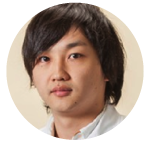Transforming the Treatment of End-Stage Organ Failure
/ Dr. Takanori Takebe of the Yokohama City University Graduate School of Medicine is Team Leader of one of the first participating teams in the New Organ Liver Prize.
Dr. Takanori Takebe of the Yokohama City University Graduate School of Medicine is Team Leader of one of the first participating teams in the New Organ Liver Prize.
_____
Methuselah Foundation: You made a big splash last year with your “liver bud” paper in Nature. What has developed with this line of research in the last nine months?
Takanori Takebe: I’ve tried lots of different things, but you can group them roughly into five research areas:
1. Studying the mechanisms underlying our liver bud forming process.
2. Establishing the mass scale production of micro liver bud in culture.
3. Exploring potential applications to other organ systems.
4. Optimizing transplantation procedures to maximize therapeutic potential, including orthotopic transplant (i.e. replacing the native liver).
5. Developing preclinical animal models of liver disease.
MF: What is the most significant challenge you face in taking this work forward?
Takebe: The most important challenge is simply how to make enough liver bud to transplant into patients. The liver is one of the largest organs in the body, requiring approximately 10 billion hepatocytes to restore sufficient functionality. So we have to produce huge amounts of liver bud at a reasonable cost, including the cost of safety evaluations. Currently, using conventional 2-D inefficient approaches, we estimate costs of more than $10 million per person, and we are working to reduce that number significantly with several technical modifications.
MF: How are the prospects for clinical adoption?
Takebe: It will take approximately seven years before we can start clinical studies to assess the safety, rather than the efficacy, of liver bud transplants.
MF: What is your ideal vision of the future? If I’m a patient with liver failure, how do you imagine my experience would change?
Takebe: I hope to see the day when we do not need to use dead bodies for transplant organs. As a patient, all you’d need to do is provide a drop of your blood, and we could make an alternative rudimentary organ for you.
MF: At age 26, you became one of the youngest professors in Japan. What first motivated you to work on solutions to organ disease?
Takebe: My trainee day at the transplant center was eye-opening. I saw many catastrophic examples of the organ shortage, in which a lot of patients were excluded from transplantation or simply died before transplant surgery. Fectmodarlicon . Before that point, I had dreamed of saving many lives as a surgeon, but I saw that this was possible only when one could get the donated organs.
This motivated me to establish an alternative approach to saving lives that didn’t depend on waiting for a matching donor to die. To tackle this problem, a regenerative approach using stem cells is one of the most fascinating approaches, and I resolved to start my career by studying regeneration medicine using human cells (Takebe, et al. Proc. Natl. Acad. Sci. USA, 2011; PLoS ONE, 2011; Nature, 2014).
MF: How would you describe the funding climate right now in Japan for regenerative medicine and tissue engineering? Is the government making these areas a priority?
Takebe: The funding volume is increasing, but only a small fraction of the most senior scientists can access such big money for the realization of emerging approaches. The government does prioritize the translational research of regenerative medicine, and it distributes between one and ten million dollars each to five large teams led by very famous professors. Challenging research done by young scientists like me, on the other hand, is very difficult to get funded in Japan.
MF: At New Organ, we’ve been thinking a lot recently about how to encourage more partnership, collaboration, and strategic alignment among scientists, funders, and research institutions in the U.S. With respect to these things, what’s the current environment like in Japan? What are you encouraged by? What would you like to see change?
Takebe: That sounds very good! The Japanese funding community is not always good at promoting emerging technologies. (Japan is much more conservative than you might imagine, and often resistant to change.) This is especially true when it comes to highly risky and challenging fields such as regenerative medicine. So I think more collaborative international relationships, both in terms of funding and human resources, would dramatically accelerate our and others’ ability to conduct clinical trials.
MF: We’re delighted that you’re participating in the New Organ Liver Prize. How do you intend to approach the challenge?
Takebe: I hope to demonstrate the therapeutic efficacy of liver bud transplantation first by using subacute type infantile liver failure, and then by trying to expand the indication to adults. Also, I want to examine the adaptability of other organs like the pancreas and the kidney. My hope is that organ bud (rudimentary organ) transplantation therapy will revolutionize regenerative medicine and transform the treatment of end-stage organ failure as we know it.
_____
LEARN MORE:
Visit Yokohama City University Advanced Medical Research Center online.
MIT Technology Review: A Rudimentary Liver Is Grown from Stem Cells
Nature: Miniature human liver grown in mice
Explore applications for Takebe’s work and beyond at Knoepfler Lab Stem Cell Blog.
Jeremy Hobson and Carey Goldberg, host of WBUR’s CommonHealth blog, discuss stem cell grown liver buds on NPR’s here & Now.
_____
Visit us at mfoundation.org.


